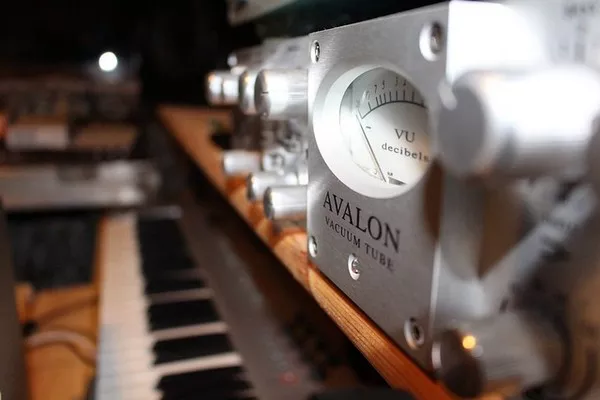In the realm of music production, the compressor stands as an essential tool for shaping sound, controlling dynamics, and enhancing the overall impact of audio recordings. Understanding how compressors function and their versatile applications can significantly elevate the quality and character of music. This article delves into the nuanced role of compressors, exploring their technical aspects, creative uses, and practical tips for integrating them effectively into music production workflows.
What is a Compressor?
At its core, a compressor is an audio signal processor designed to regulate the dynamic range of an audio signal. Dynamic range refers to the variation between the loudest and softest parts of a sound. Compressors work by reducing the volume of louder sounds above a certain threshold, resulting in a more consistent and controlled audio output. This process involves several key parameters:
Threshold: The level at which compression begins to act. Any signal that exceeds this threshold will be affected by the compressor.
Ratio: Determines how much the signal above the threshold is reduced. For example, a 2:1 ratio means that for every 2 dB the input signal exceeds the threshold, the output signal will increase by 1 dB.
Attack: Specifies how quickly the compressor responds once the signal surpasses the threshold.
Release: Dictates how long it takes for the compressor to stop acting after the signal falls back below the threshold.
Gain Makeup: Allows the user to boost the overall output level to compensate for the reduced dynamic range.
Functions of a Compressor in Music Production
Dynamic Control: One of the primary functions of a compressor is to rein in peaks in the audio signal, ensuring a more consistent and balanced sound. By reducing the dynamic range, compressors make it easier to maintain a clear and present mix, particularly in genres like rock and electronic music where punch and clarity are paramount.
Enhanced Sustain: Compressors can enhance the sustain and perceived loudness of audio signals by effectively increasing the signal’s average level. This is especially useful for instruments like electric guitars or snare drums, where a longer sustain can add power and presence to the sound.
Taming Transients: Transients are short, sudden bursts of sound energy that often occur at the beginning of a note or drum hit. Compressors can tame these transients, making them less harsh or prominent in the mix, resulting in a smoother and more polished sound.
Glue and Cohesion: When used on multiple tracks within a mix, compressors can help “glue” elements together, creating a more cohesive and unified sound. This is particularly effective on drum buses or entire mixes, imparting a sense of cohesion and solidity to the overall production.
Creative Effects: Beyond traditional dynamic control, compressors can be used creatively to impart character and color to audio. Techniques such as parallel compression (also known as New York compression) involve blending a heavily compressed signal with the dry signal to add weight and impact without sacrificing dynamics.
Practical Applications of Compressors
Vocals: Compressors are indispensable in vocal processing, smoothing out dynamics to ensure a consistent vocal performance that sits well in the mix. Careful adjustment of attack and release times is crucial to preserve vocal clarity and emotion.
Drums and Percussion: Compressors can shape the impact and sustain of drums and percussion instruments. By adjusting attack and release settings, you can emphasize or subdue the attack of drum hits, giving the drums more punch or making them sit more subtly in the mix.
Bass: Compressors help control the dynamics of bass instruments, ensuring that the low-end remains present and consistent across different notes and phrases. This is vital for maintaining a solid foundation in the mix.
Mix Buses: Applying gentle compression to mix buses (e.g., drums, guitars, vocals) can unify the elements of a mix, enhancing clarity and balance. This approach often involves subtle compression settings to avoid over-processing.
Mastering: In mastering, compressors are used to subtly enhance the overall dynamics and cohesiveness of a mix. Multiband compressors, which target specific frequency ranges, are often employed to address imbalances without affecting the entire mix.
Tips for Using Compressors Effectively
Use Your Ears: While understanding technical parameters is important, always rely on your ears to determine what sounds best. Experiment with different settings and listen critically to the results.
Start Conservatively: Apply compression gradually and avoid excessive gain reduction, especially on individual tracks. Subtle adjustments often yield more natural and transparent results.
Consider the Context: Adapt compressor settings based on the musical context. For example, vocals may require different compression settings in a ballad versus a heavy rock song.
Learn to Listen for Compression Artifacts: Over-compression can lead to undesirable artifacts such as pumping, breathing, or a loss of transient detail. Train your ears to identify these issues and adjust settings accordingly.
Experiment with Different Compressors: Each compressor model imparts its own sonic character. Experiment with various plugins or hardware units to discover which ones best complement your music.
SEE ALSO How Much Does It Cost For A New Ac Compressor
Conclusion
In the intricate world of music production, compressors play a pivotal role in sculpting sound, enhancing dynamics, and shaping the overall character of audio recordings. From controlling wayward peaks to adding sustain and punch, compressors offer a myriad of creative possibilities for producers and engineers. By mastering the art of compression—both technically and creatively—musicians can elevate their productions to new heights, achieving clarity, impact, and sonic cohesion that captivate listeners and stand the test of time.

